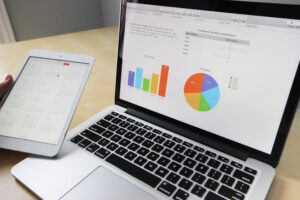Table of Contents
ToggleWhat Are Algorithms?
Simply put, an algorithm is a set of instructions that tell how to solve problems. Algorithms can do everything from calculation and data processing all the way up through automated reasoning! One really cool thing about them? They’re always finite in size – meaning there’s no need for endless amounts input or complicated steps when you want your program completed with accuracy possible only by using these amazing little packages called “algorithms”.
The transition from one state to the next is not necessarily deterministic; some algorithms, known as randomized algorithms, incorporate random input. The concept of algorithm has existed for centuries, however a partial formalization of what would become the modern algorithm began with attempts to solve the Entscheidungsproblem (the “decision problem”) posed by David Hilbert in 1928. Subsequent formalizations were framed as attempts to define “effective calculability” or “effective method”; those formalizations included the Gödel–Herbrand–Kleene recursive functions of 1930, 1934 and 1935, Alonzo Church’s lambda calculus of 1936, Emil Post’s “Formulation 1” of 1936, and Alan Turing’s Turing machines of 1936–7 and 1939. Giving a formal definition of algorithms corresponding to the intuitive notion remains a challenging problem.
Understanding Algorithms
The Financial Services industry uses algorithms in loan pricing, stock trading and asset-liability management. For example, algorithmic trading, known as “algo-trading,” is used for deciding the timing of orders to buy or sell stocks at a pace that cannot be matched by humans alone; this type of automated function can also refer specifically towards black box computer programs which perform these transactions automatically without any knowledge on what happened between them (the input) when making decisions about how much money should go into one investment versus another–a process called algorithmics.
High-frequency trading, also known as HFT or scalping, is the act of rapidly buying and selling shares based on extremely small fluctuations in price. This form makes up a large percentage stock market throughout North America due to its efficiency, which can be attributed mostly to using algorithms for execution rather then human traders like before 1950s when people traded stocks face-toface at shareholder meetings.
Types of Algorithmic Trading
Algorithms are used by traders to make decisions on whether they should buy or sell. There’s more than one kind of algorithm, depending on what strategy it is pursuing at that moment in time for example, mean reversion will examine prices over long-term averages while market timing looks only as far ahead has immediate trading opportunities with an aim toward capturing profits when others might be losses. Other strategies may involve fund rebalancing, which is constantly monitoring your portfolio weights according to certain rules so you don’t miss any potential gains because Rules can change based on recent performance results.
- Arbitrage: Arbitrage is a strategy that takes advantage of the price differences between different markets. Algos can capitalize on this by quickly analyzing data and identifying when prices are misaligned, they will then buy or sell assets in those locations based off their profit margins while not Burrhead-of any risk involved with holding onto them longer than necessary.
-
Market Timing: Some investors use market timing strategies to try and predict when an asset will perform best. These algorithms are based on the idea that there is a certain time during which you should buy or sell, so they involve lots of datasets and plenty of testing.
-
Mean Reversion: Mean revision strategies are very popular among traders because they work to ensure that you make money even when the market doesn’t. If a stock’s price is outside of its average value, meaning it has more dispersed literature than normal or there have been indicators suggesting an upcoming change in direction with this particular asset class over others at similar periods- then these types will trade accordingly, assuming one can accurately predict where prices might go next based off past performance data alone (e..g rise).



